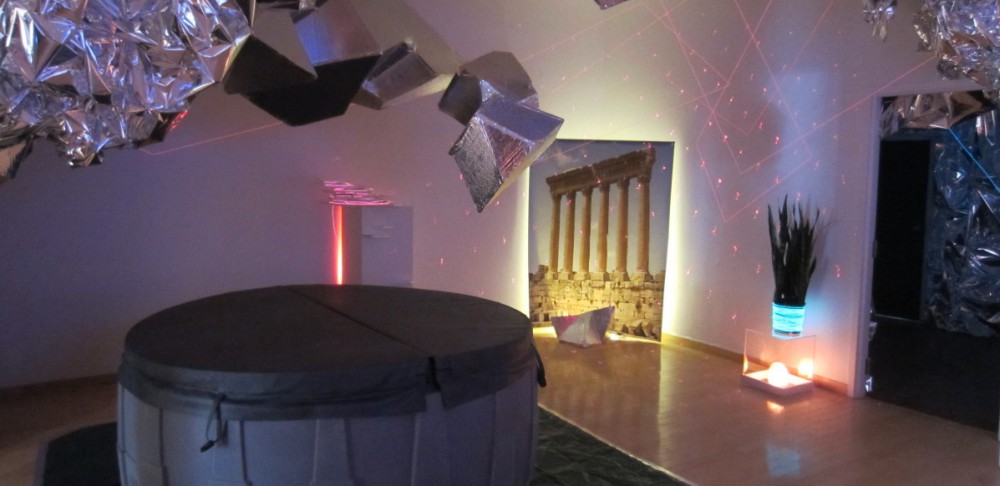I have mixed feelings about my trip to the MoMa. Firstly, that place is packed on weekends. I had gone around 3pm last Saturday, and I felt a little ill from the experience. Of course it didn’t help that I had already come down with some kind of sickness beforehand. I guess it’s natural that it be packed, it is a tourist attraction after all. Another thing that I would like to note is that the place is a lot smaller than I had initially imagined. I’m used to museums being the size of the Smithsonian or the Natural History Museum. That isn’t a demerit, it’s just something I noticed especially because of how packed with people it was. If you haven’t noticed already I’m not a fan of places packed with people.
Yes. Well, moving on.
When I finally reached the exhibit on the 3rd floor it was an unexpected treat. I had gone into this exhibit thinking I would be thrust into the future by fifty to a hundred years; huge vistas of futuristic urban arcologies and endless sprawls basically. What I got was actually a very interesting, informative, and practical outlook on where the world seems to be heading in terms of urbanization and population density.
The main issue this exhibit tackles is the concern over the influx of population in the coming years. This is a major concern due to dwindling resources and available land. Of the Six cities covered I found Lagos, Istanbul, and Rio de Janerio to be the most interesting. Interesting in the urban factoids and technological proposals put forth in each city’s section.
What drew me most to these three cities is their ‘green tech’ approach to combating the population and resource problems of the future. I’ve been a big fan of meshing technology with nature for a while now, so these ideas really hit home for me.
Starting with Lagos, their focus seems to be on utilizing sustainable sources of energy such as wind, water, and solar technologies. Since 30% of Lagos is composed of water, they plan to develop the water ways into main channels for transportation in the city. They propose that with the canals as a central transport medium, this would alleviate the need for heavy automobile usage. This would also promote small businesses such as street vendors, bike repair points, and boat docks.
Istanbul on the other hand is more of a rural landscape in comparison. Today Istanbul culture values self-organization, local production, micro-facilities, and social interaction. To build upon that, future development would consist of gated communities with repetitive town centers with clusters of open land.
Rio de Janerio’s section depicted a striking contrast with Lagos and Istanbul, in that much of the city is surrounded by forests and is built on hills and mountains. Today there is a vast disparity between rich and poor in Rio, but fortunately their middle class is growing. Unfortunately they the practice of Puxadinhos, or the practice of adding to existing structures with whatever materials available, is in full practice.
I had trouble getting to cover New York since the majority of the visitors flocked to that section. From what I gathered, the main topic of concern is over illegal modification of homes to house more people than legally allowed. I guess I wasn’t as interested in this, since I live and have lived in areas where this practice is rampant.
In regards to drawing comparisons to the texts, I’d have to say we are moving in an opposite direction to them. The cities I mention above show a desire to move toward sustainable and environmentally friendly sources of energy, as well as a push for living within the natural environment rather than destroying it. This pretty much goes against the predictions of the world in Metropolis, The Machine Stops, and Bladerunner. I suppose I’d have to change my mind if an apocalyptic event occurs, but until then things seem optimistic. At least in some parts of the world.




I got a bit lost trying to find the exhibit. The woman running the help desk sent me to the opposite side of the building, when it was 20 feet in front of her through some doors. I liked the positive outlook from the other cities around the world, it was refreshing to see some of the ingenious ideas they were putting forth.